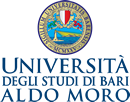The use of TBLT and metacognitive awareness in enhancing the speaking competence of second language learners: a case study in Chinese students learning beginner level Italian language
DOI:
https://doi.org/10.15162/1970-1861/1332Parole chiave:
TBLT, metacognitive awareness, oral production, Chinese students, speakingAbstract
This case study analyses the use of Task Based Language Teaching and metacognitive awareness for enhancing oral proficiency in a group of Chinese students learning beginner level Italian language. The implementation of TBLT and metacognitive awareness in the classroom is explained. Followed by the methodology used for the research. The qualitative data was gathered from students’ diaries while the quantitative data comes from standardized exam results. Subsequently the data is qualitatively and quantitatively analyzed, comparing both the experimental and control groups. The study displays the impact on both the speaking and listening skills of the students. It also shows a deeper awareness of their metacognitive skills and suggests lower performance anxiety, while heightening the students’ self-esteem and motivation.
Riferimenti bibliografici
Adams R., 2009, “Recent publications on task-based language teaching: a review”, in International Journal of Applied Linguistics 19, pp. 339-355.
Alexander P. A., 2008, “Why this and why now? Introduction to the special issue on metacognition, self-regulation and self-regulated learning”, in Educational Psychology Review, 20(4), pp. 369-372.
Bailey K.M., 1990, “The use of diaries studies in teacher educational programs. Richards”, in J.C. & Nunan, D. (Eds.). Second Language teacher education, Cambridge, Cambridge University Press, pp. 215-266.
Benati A., 2016, “Input manipulation, enhancement and processing”, in Theoretical views and empirical research, 6 (1), pp. 65–88.
Bygate M., 1998, “Theoretical perspectives on speaking”, in Annual Review of Applied Linguistics, 18, pp. 20–42.
Bygate M., Skehan P., Swain M., 2001, Researching pedagogic tasks, second language learning, teaching and testing, Harlow, Longman.
Canale M., 1983, “From Communicative Competence to Communicative Language Pedagogy”, in J. C. Richard, & R. W. Schmidt (Eds.), Language and Communication, London, Longman, pp. 2-14.
Canale M., & Swain M., 1980, “Theoretical Bases of Communicative Approaches to Second Language Teaching and Testing”, in Applied Linguistics, 1, pp. 1-47.
Chamot A.U., & O’Malley J.M., 1994, The CALLA Handbook: Implementing the Cognitive Academic Language Learning Approach, Addison-Wesley Publishing Company, Boston.
Creswell, J., & Plano Clark V., 2007, Designing and Conducting. Mixed Methods Research. Thousand Oaks, CA, Sage.
DeKeyser R. M., 2015, Skill acquisition theory. In B. VanPatten & J. Williams (Eds.), Theories in second language acquisition: An introduction. 2nd edition (pp.94–112), Mahwah, NJ, Lawrence Erlbaum.
Edwards C., & Willis J. (Eds.). 2005. Teachers Exploring Tasks in ELT. Palgrave MacMillan: British Council ELT Innovations Award 2006.
Ellis G., & Sinclair B., 1989, Learning to Learn English: a Course in Learner Training. Cambridge, Cambridge University Press.
Ellis R., 2003, Task-based Language Teaching and Learning. Oxford, Oxford University Press.
Ellis R., 2005, “Measuring implicit and explicit knowledge of a second language: A psychometric study”, in Studies in Second Language Acquisition, 27, pp. 141–72.
Ellis R., 2008, The study of second language acquisition, Oxford, Oxford University Press.
Ellis R., 2009, “Task-based language teaching: Sorting out the misunderstandings”, in International Journal of Applied Linguistics, 19, pp. 221-246
Flavell J. H., 1976, “Metacognitive aspects of problem solving”, in Resnick, L.B. (Ed.) The nature of intelligence, NJ, Hillsdale, pp. 231-235.
Gass S. & Selinker L., 1992, Language transfer in language learning, Philadelphia, PA, John Benjamins.
Gass S., 1997, Input, interaction and the second language learner, Lawrence Erlbaum Associates Inc.
Gass S., 2003, “Input and interaction”, in C. J. Doughty & M. H. Long (Eds.), The handbook of second language acquisition, Oxford, Blackwell, pp. 224-255.
Gass S. M., & Mackey, A. (Eds.), 2012, The Routledge handbook of second language acquisition, London, Routledge.
Gass S. M., 2013, Second Language Acquisition: An Introductory Course, Hoboken, Taylor and Francis.
Goh C.C.M., 2007, Teaching speaking in the language classroom, SEAMEO Regional Language Centre.
Goh C.C.M., & Burns A., 2012, Teaching speaking: A holistic approach, New York, Cambridge University Press.
Goh C.C.M., 2017, “Research into practice: Scaffolding learning processes to improve speaking performance”, in Language Teaching: Surveys and Studies, 50(2), pp. 247-260. [DOI: https://doi.org/10.1017/S0261444816000483].
Hesse-Biber S., 2010, “Emerging methodologies and methods practices in the field of mixed method research”, in Qualitative Inquiry, 16(6), pp. 415–418.
Hymes D. H., 1979. “On Communicative Competence”, in J. B. Pride, & Holmes (Eds.), Socio-Linguistics: Selected Reading, London, Penguin Books, pp. 269-293.
Johnson R. B., Onwuegbuzie A. J., & Turner, L. A., 2007, “Toward a Definition Mixed Methods Research”, in Journal of Mixed Methods Research, 1, pp. 112–133.
Leaver B., & Willis J. R., 2004, Task-based Instruction in FLE: practices and programs, Georgetown University Press.
Levelt W.J.M, 1989, Speaking: From intention to articulation, Cambridge, MA, MIT Press.
Levelt W.J.M., 1992, “Accessing words in speech production: Stages, processes and representations”, in Cognition, 42, pp.1-22.
Liria P. (Ed.), 2009, L'approche actionnelle dans l'enseignement des langues, La Maison des Languages edition.
Long, M., 1996, “The role of linguistic environment in second language acquisition”, in Ritchie W., Bhatia T., (Eds.). Handbook of Second Language Acquisition, San Diego Academic Press, pp. 413-468.
Matsumoto K., 1996, “Helping learners reflect on classroom learning”, in ELT Journal, 50 (2), pp. 143-149.
Mackey A., & Philp J., 1998, “Conversational interaction on second language development: Recasts, responses, and red herrings?”, in Modern Language Journal, 82, pp. 338–356.
Nakatani Y., 2006, “Developing an Oral Communication Strategy Inventory”, in The Modern Language Journal, vol. 90, 2, pp. 151-168. [DOI: https://doi.org/10.1111/j.1540-4781.2006.00390.x].
Nunan D., 1988, A learner-centered curriculum, Cambridge, Cambridge University Press.
Nunan D., 1996, “Learner strategy training in the classroom: An action research study”, in TESOL Journal, 6, pp. 35-41.
Nunan D., 2004, Task-based Language Teaching, Cambridge, Cambridge University Press.
Paterson A., & Willis J., 2008, English Through Music, Oxford University Press.
Segalowitz N., 2010, Cognitive bases of second language fluency, New York, Routledge.
Schmidt R., 2001, “Attention”, in Robinson, P. (Ed.). Cognition and second language instruction. Cambridge University Press, pp.3-32.
Skehan P., 1998, A cognitive approach to language learning, Oxford, Oxford University Press.
Swain M., 1985, “Communicative Competence: Some Roles of Comprehensible Input and Comprehensible Output in Its Development”, in Gass S.M., & Madden C.G. (Eds.). Input in Second Language Acquisition, Newbury House, Rowley, pp. 235-53.
Swain M., & Lapkin S., 1995, “Problems in Output and the Cognitive Processes They Generate: A Step Towards Second Language Learning”, in Applied Linguistics, 16(3), pp. 371–391.
Ullman M., “A neurocognitive perspective on language: The declarative/procedural mode”, in Nature Reviews Neuroscience, 2, pp. 717–726.
VanPatten, B. & Williams, J., 2007, “Input processing in adult second language acquisition”, in VanPatten, Bill & Williams, Jessica (Eds.), Theories in second language acquisition: An introduction, Lawrence Erlbaum Associates Publishers Inc, pp. 115-135.
VanPatten B., & Benati, A. G., 2010, Key terms in second language acquisition. Continuum international publishing group.
VanPatten, B., Smith, M. & Benati A. G., 2019, Key Questions in Second Language Acquisition: an Introduction. Cambridge University Press.
Wenden, A. L., & Rubin J. (Eds.), 1987, Learner strategies in language learning, Englewood Cliffs, NJ, Prentice Hall, pp.133–143.
Wigglesworth, G., & Elder, C., 2010, “An investigation of the effective and validity of planning time in speaking test tasks”, in Language Assessment Quarterly, 7 (1), pp. 1–24.
Willis, D., 2003, “Rules, Patterns and Words: Grammar and Lexis”, in English Language Teaching, Cambridge, Cambridge University Press.
Willis, D., & Willis J., 2007, Doing Task-based Teaching, Oxford, Oxford University Press.
Young, C., & Sim F.Y., 2003, “Learner diaries as a tool to heighten Chinese students’ metacognitive awareness of English Learning”, in Lee G.K., Ho L., & Meyer L.J.E, Teaching English to students from China, Singapore, Singapore University Press, National University of Singapore.
Zheng, J., 2018, “The Metacognitive Strategy in English Listening Comprehension, in Theory and Practice”, in Language Studies, Vol. 8, No. 2, pp. 226-231 [DOI: http://dx.doi.org/10.17507/tpls.0802.07]





